
Eternal Father, strong to save,
Whose arm hath bound the restless wave,
Who bid 'st the mighty ocean deep
Its own appointed limits keep;
O hear us when we cry to Thee,
For those in peril on the sea.
-William Whiting (1825-1878)
I like ships. I grew up in a port city—in the port city, New York—at the end of the era of the great ocean liners that crossed the Atlantic on a regular basis. Every time my father drove us to visit relatives in Brooklyn we'd drive down Manhattan's West Side Highway. Thus some of my earliest memories are of seeing those magnificent vessels tied up along the docks in the Hudson River. I knew them by name, and great names they were: Ile de France, Italia, the Cunard "Queens," Elizabeth and Mary, Michelangelo, Leonard da Vinci, Bremen, and many others, including of course the incomparable United States. I loved them all, even the smaller vessels of the American President line, even the occasional humble bulk freighter that berthed on the West Side instead of across the river in New Jersey. It was a disappointing drive for me if at least one of the big ships wasn't in port, her bow towering over the highway lanes. They are all gone now, mostly victims of cheap air travel and the modern traveler's contempt for the expression that "Getting there is half the fun." I am happy to say that while most of the great liners are gone, one—William Francis Gibbs' phenomenal superliner, United States—still floats, although what has happened to her since she went out of service is a disgrace and a shame to the country whose name she bears.
Shipwrecks happen every day on this watery planet of ours. Tens of thousands of ships cross the ocean daily. The oceans are very unforgiving of error or miscalculation; a single mistake can—all too often does—doom a ship, its crew, and its passengers. In some ways big ships are similar to the cathedrals of Medieval times. While they're the ultimate expression of confidence in Man's ability to deal with Nature (and there's a lot of Nature to be dealt with in the North Atlantic, especially in winter), they're also almost religious edifices in that they are tributes to the power of the world's most dangerous places. They can be viewed as a sort of appeal to Heaven to protect "...those in peril on the sea..." as all mariners always are.
Recently there have been a couple of wrecks and one sort-of wreck that are interesting to me as a dilettante ship-lover. The most famous shipwreck of all, that of RMS Titanic, happened over a century ago. It's been covered in books, in movies, and in scholarly accounts, so won't be part of this essay. I'll start with one I remember very clearly, one that is perhaps the second most famous wreck: the sinking of the Italian Line's glorious Andrea Doria in 1956.

Italian builders have always created beautiful vessels. Italy has thousands of miles of coastline, and a very, very long tradition of shipbuilding, from ancient times to the present. (Viking's lovely cruise ships are built in Italy even today.) If ships can be regarded as the expression of a nation's character and tastes, Andrea Doria was sleek, elegant and "classy," like a fashion model on a Milan runway. Even when moored she gave the impression of speed and grace.
On July 26th, 1956, Andrea Doria was westbound for New York City, off the island of Nantucket. The Swedish liner Stockholm was eastbound.
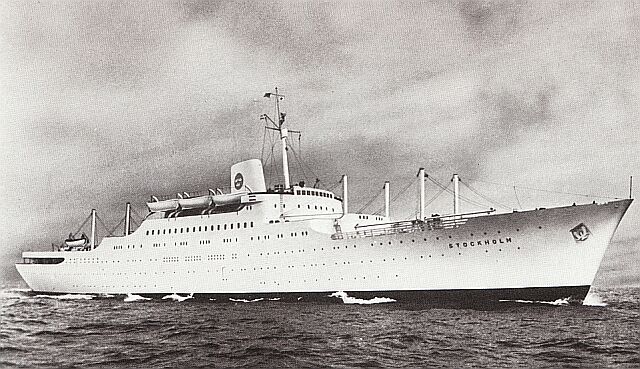
The night was foggy and while both vessels had radar equipment, the signals were misinterpreted. The two collided, a destiny seemingly as inevitable as that in any Greek tragedy. Andrea Doria was holed and immediately began to list. Stockholm's bow section was completely torn off.

As night falls, Andrea Doria begins sinking
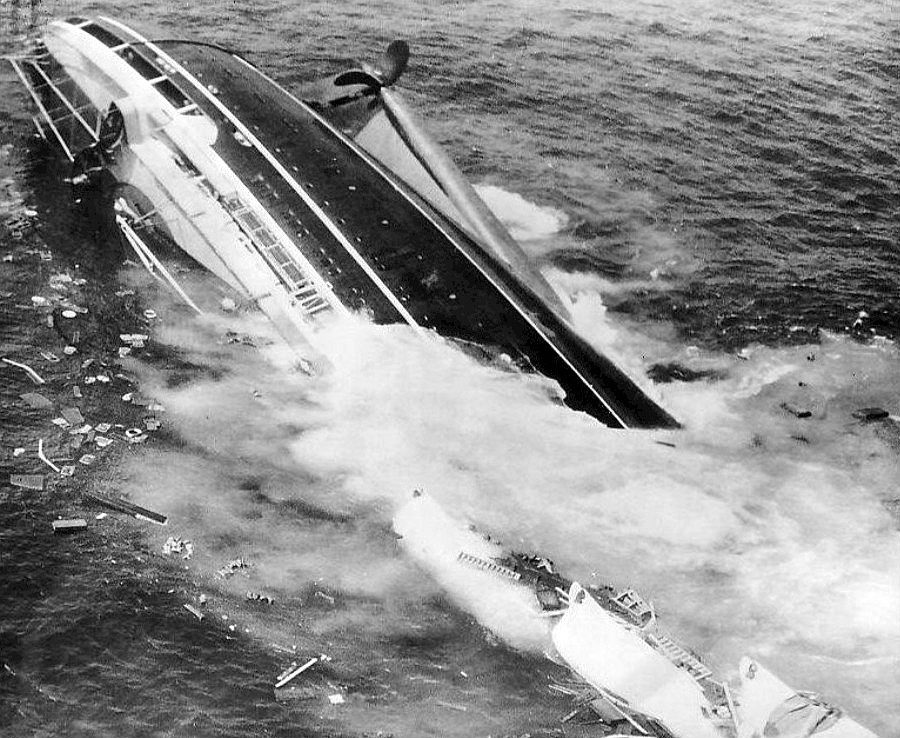
The death of Beauty: Andrea Doria takes the final plunge

On the bottom, 35 years later
 Andrea Doria sank, but Stockholm survived. Forty-six people aboard Andrea Doria and five from Stockholm died in the collision. Because Andrea Doria sank comparatively slowly, because (in conformity with the post-Titanic rules) both ships carried adequate numbers of lifeboats, and thanks to the presence of other vessels in the busy shipping lanes off Nantucket, the loss of life was lower than it might have been in other circumstances.
Andrea Doria sank, but Stockholm survived. Forty-six people aboard Andrea Doria and five from Stockholm died in the collision. Because Andrea Doria sank comparatively slowly, because (in conformity with the post-Titanic rules) both ships carried adequate numbers of lifeboats, and thanks to the presence of other vessels in the busy shipping lanes off Nantucket, the loss of life was lower than it might have been in other circumstances.
I remember this incident well. I was nine years old and it was sensational news in New York City: at least one newspaper put out an "Extra!" section, the only time I remember that happening. TV stations sent out helicopters to cover the sinking and films were run on the news stations that evening.
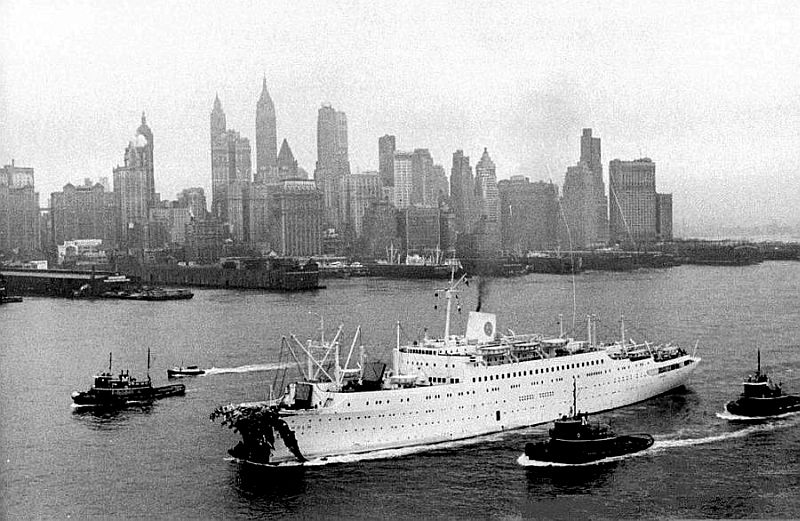
The badly damaged but still-seaworthy Stockholm returns to New York Harbor
Andrea Doria was a beautiful ship, possibly flawed in design, which might have contributed to her loss—a subject beyond the scope of this essay—but her sinking is one of those "I-remember-exactly-where-I-was-at-the-time" events. I could take you to the very spot even today, 65 years later. Today she rests on the bottom, slowly disintegrating, but remarkably, Stockholm not only survived the collision, she went on to New York, was repaired, and—believe it or not—is still in service. After passing through several owners, rebuilds, and re-namings, she survives today as M.V. Astoria, completely renovated as a cruise ship. By far the oldest one of them all: she is 75 years old!
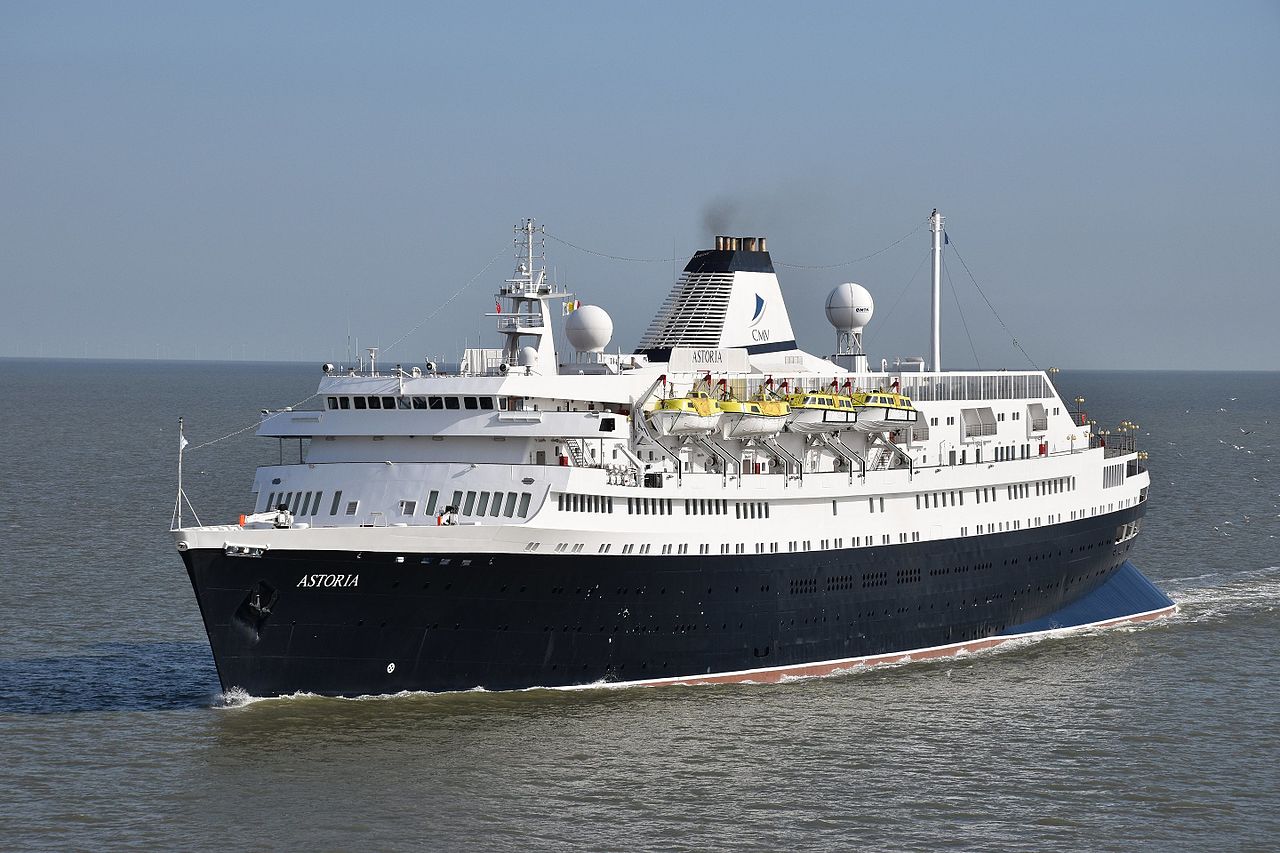
Not all shipwrecks come about through collisions, of course. Some come about through stupidity, hubris, or simple bravado. The best example of this is the loss of Costa Concordia on the shores of the island of Giglio in Tuscany. on January 13, 2012. In this region, well known for shoals, Costa Concordia's Captain was performing a "sail past" maneuver, later asserting that he was doing so at the behest of his owners. It was something he'd done before.
As you can see by the image below, in terms of beauty this vessel would never have won any prizes: despite having been built by the famous Fincantieri shipyard near Venice, she was a typical ugly, slab-sided monster of 114,147 gross tons, nearly four times the size of Andrea Doria. Modern cruise ships look like someone grafted a hotel onto a container ship (well, actually, they did). From the purely aesthetic point of view, Costa Concordia wasn't much of a loss.
But there were deaths. Of the 4252 people aboard, 32 died: 27 passengers, and 5 crew members, plus an additional death of one of the salvage team. Sixty-four others were injured.
The water was shallow (that's why she hit the rocks!) so she ended up resting on her starboard side. You might think this would have facilitated salvage operations, but it didn't. It took two and a half years to get her upright and floated off the reef using "sponsons," big tanks of air welded to the sides. That allowed her carcass to be towed away for scrapping. The whole operation cost $2 billion, three times Costa Concordia's construction price. Scrapping was finally completed in 2017. Five years, a couple of billion bucks, 33 deaths, and God alone knows how much paid out in insurance claims and lawsuits.
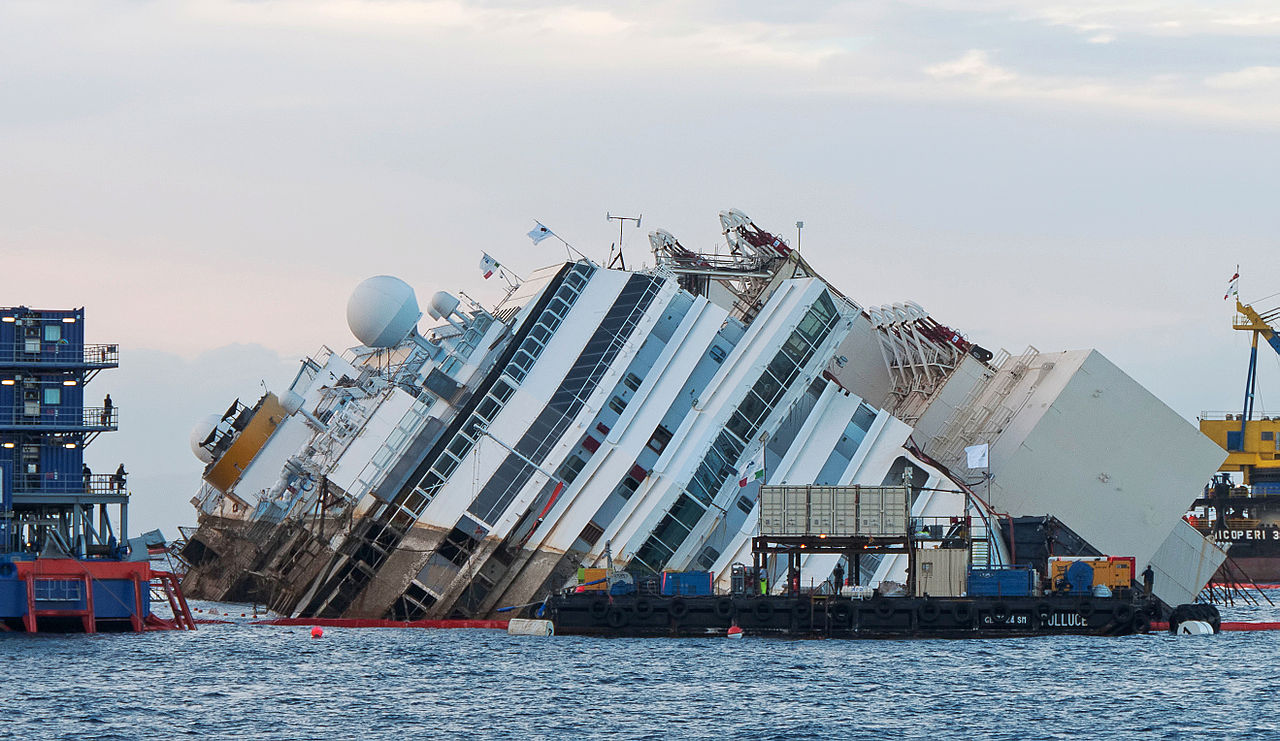
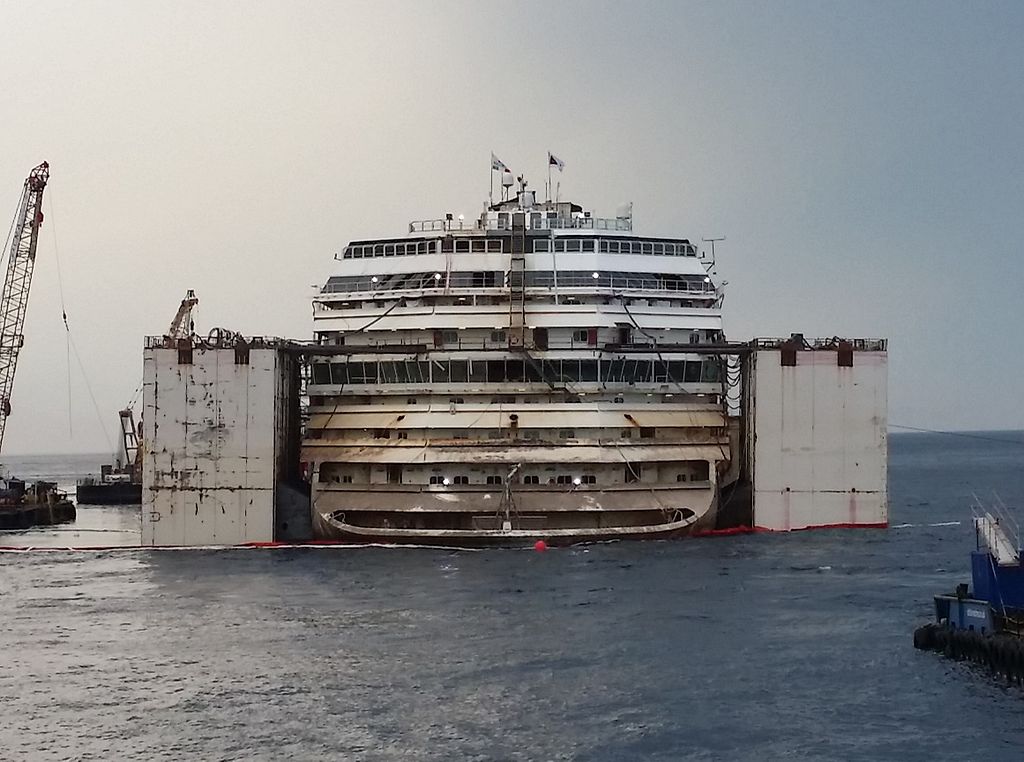

Top to bottom: Costa Concordia on her side; the port side sponson is in place. Refloated between the sponsons, ready to be towed away. The wrecked starboard side cabins and balconies.
Costa Concordia's Captain was convicted of negligence, manslaughter, and of leaving 300-odd people aboard when he abandoned ship. He was sent to prison for 16 years. There were allegations by the prosecution that he had been "showing off" to his girlfriend, who was aboard as a non-paying passenger. Five other individuals, including several officers, the helmsman, and one of the cruise line directors, also went to jail, for periods of two to two-and-a-half years.

Golden Ray was a "working" ship. No pleasure craft, but a humongous car carrier, bringing new automobiles from their factories to places where they were to be sold. Seventeen stories tall and more than 600 feet long, she was a BIG ship. Car carriers like this are pretty common sights in some areas. Golden Ray is by no means the first such vessel to be lost.
She was a "ro-ro," a slang term for a "roll-on-roll-off" design, which makes a lot of sense for any vessel transporting automobiles. To maximize cargo capacity the cars are packed in tightly so of course there's no room to turn them around: they go in one end and out the other. Then the ship returns to load another batch.  There are some ship designers who consider ro-ro's inherently unstable, in part because of the necessity to pack several hundred heavy cars onto several decks, a practice that raises the ship's center of gravity. If the center of gravity is higher than the center of buoyancy a ship becomes far more likely to capsize, and that's what seems to have happened to Golden Ray.
There are some ship designers who consider ro-ro's inherently unstable, in part because of the necessity to pack several hundred heavy cars onto several decks, a practice that raises the ship's center of gravity. If the center of gravity is higher than the center of buoyancy a ship becomes far more likely to capsize, and that's what seems to have happened to Golden Ray.
On 7, September 2019, Golden Ray was proceeding on her rounds in St Simons Sound, Georgia, headed for delivery ports in the Middle East. She was heading into a turn to avoid an oncoming ship. Now, when ships turn it leans to one side: Golden Ray leaned too far, thanks to her high center of gravity. She leaned into a capsize condition. The pilot (all vessels are required to have a pilot with local knowledge on board as they enter and leave a port) had the presence of mind and the skill to get her to a place where she could be "beached," i.e., grounded in shallow water. That at least increased the chances that she could be salvaged, perhaps intact.
No one died in this incident, though for a while it appeared someone might. Some crew members were trapped in the overturned hull for a couple of days. They were not in danger of drowning, again thanks to the pilot's quick action: half the hull was above water and there was no likelihood of that nor of suffocation. In time a hole was cut in the hull and they were successfully extracted after a couple of harrowing days.
The salvage operation is still going on as I write this, and it's a most interesting example of ingenuity and engineering skill. The cars couldn't be removed from the wreck, clearly. Nor, having been grounded so completely and over such a huge expanse of her hull, could she have been refloated intact and towed away. The decision was made to cut Golden Ray into pieces and carry the pieces away on a barge.
This is a pretty mammoth operation and calls from some mammoth equipment. Specifically it calls for the catamaran-like salvage vessel VB-10000 , with a very high midsection and a huge chain to be passed underneath the ship. The chain is then methodically worked up and down and hey, presto! the ship is sawed into smaller chunks. Well, that's the theory. Here's a diagram, shamelessly stolen from the excellent article in Car & Driver Magazine, of how this works:

The first step is to weld lifting blocks to the hull. Then the chain is passed underneath, and the ship's hull cut through by "sawing" it back and forth. This video, made by the salvage company and swiped with no apologies from You Tube, shows the operation of the "saw" and removal of the cut sections.

The video is neat and precise but cutting up a ship filled with vehicles isn't. And it's fraught with environmental hazards. Above you can see the hull with a cut in it. below you can see what happens to a few hundred cars which have had a chain slice through them.
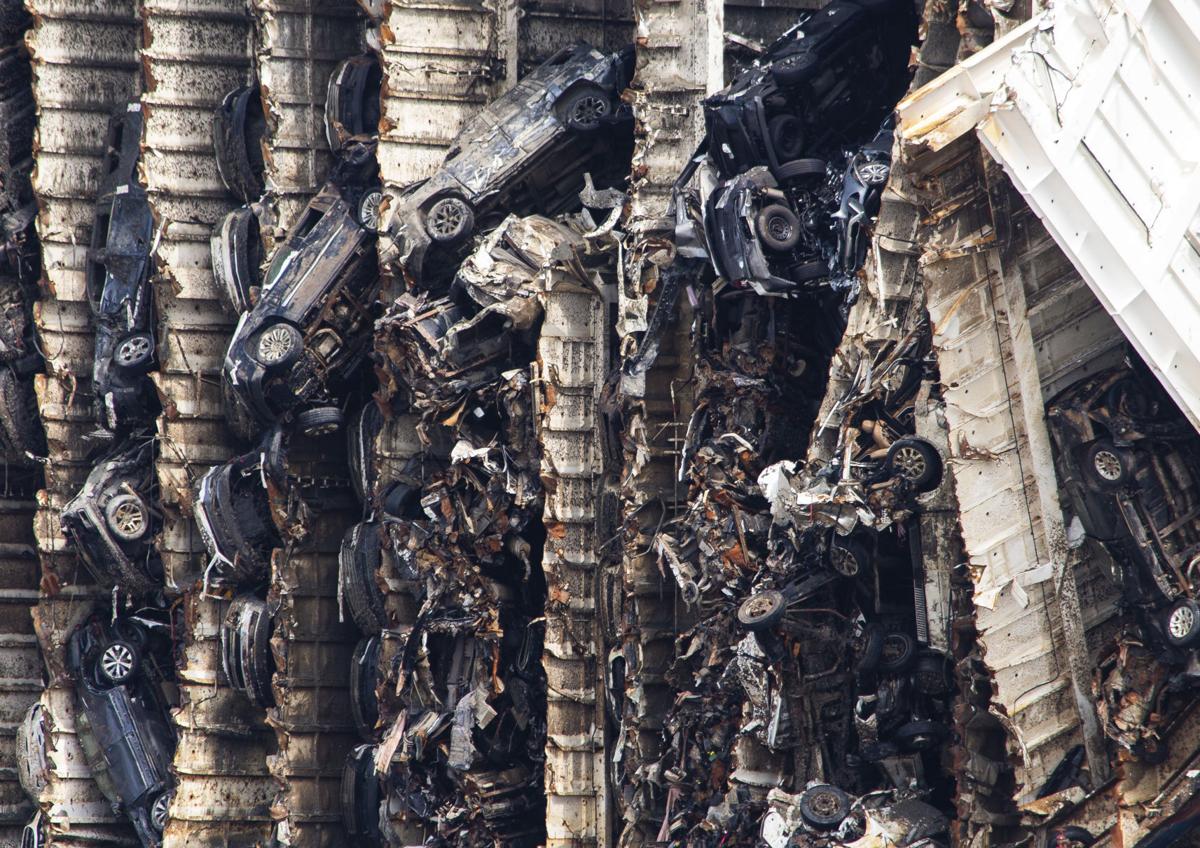
The salvage company is going to extraordinary lengths to keep the debris and miscellaneous chemicals (e.g., gasoline and oil) out of the water, but at last report stuff was washing ashore, to be gleefully taken home as souvenirs by the thousands of onlookers the operation has attracted. It may be that the multi-millions of dollars the salvage will cost will be made up by the sales of soft drinks and snacks to people along the shore watching it unfold. It's been going on for a year and a half now but in time it will be done as each section is floated away to the scrapyard on the world's largest salvage barge.

Ever Given

This one isn't really a wreck, but it's certainly a mess. Ever Given (above) is a colossal container ship, some 400+ meters long, that has managed to get herself stuck athwart the Suez Canal, one of the world's most vital waterways. The Beautiful Talking Heads on the "news" are fond of describing her as "skyscraper sized," and for once they're right. She is longer than most skyscrapers (even in Manhattan) are tall. On every voyage she carries tens of millions of dollars of goods in hundreds of boxes on her deck, shuttling all kinds of things, from refrigerators to plastic ducks, to and from the Middle East and Africa. The Suez Canal connects the eastern Mediterranean Sea to the Red Sea and is the "short cut" that avoids sending ships around the Cape of Good Hope. Since a container ship can cost $100,000 a day to run, using the Canal is a significant saving in operational expense. The Cape of Good Hope route takes weeks, and is fraught with hazards from bad weather and pirates (anyone who thinks pirates existed only in The Olden Days should go see the movie "Captain Phillips"). Having the Canal blocked, even for a short time, costs hundreds of millions of dollars.
Container ships like Ever Given revolutionized the shipment of goods when they were introduced a few decades ago. In my youth the term "freighter" meant a break-bulk ship, the sort of vessel seen today only in old movies like "On The Waterfront." Break-bulk freighters carry stuff not in boxes, but lashed to the decks as single items. The container ship cuts down not only on the time it takes to load and unload cargo, it minimizes theft of goods at the docks, greatly reduces the numbers of crewmen and stevedores needed to handle the loose cargo, and most importantly cuts the cost of shipping for any individual item to nearly nothing. Yes, it costs vast sums to run a container vessel: but when a single container can carry ten thousand pairs of shoes from Asia headed for the Wal-Mart in Christiansburg, the shipping cost for any single pair is near zero. The same is true for almost any other item. Plus specialized container ships exist. Many ships carry "dry goods" like cloth or shoes, but some have refrigerated boxes for perishable items. The modern world could not exist as we know it without container ships. Ever Given is only one of tens of thousands of the ships that, in essence, bring us all we need, basically the backbone of the world's economy.


As it happens I have many friends and colleagues in Egypt, one of whom lives in the beautiful city of Ismailia. That's where the control center for the Canal is located: ship traffic in both directions is regulated in Ismailia. I have sat at a table in a club on the banks of the Canal and watched the parade of ships move by, dozens of them every hour. The numbers of ships that use this waterway are simply staggering to anyone who's not seen them. Since the Suez Canal is at sea level (unlike the Panama Canal) they can move along under power, without having to be pulled through locks by tug engines on shore. Tankers, container ships, break-bulk freighters, passenger ships, you name it, all proceed sedately between the two seas. The Canal's construction was one of the great feats of 19th Century engineering.

When a ship gets stuck in it things are pretty serious. Traffic stops, millions upon millions of dollars are lost, ships back up at the entrances to the Canal at Port Said and Suez City, the steady supply of plastic ducks from Asia is halted. Not a tolerable situation.

Ever Given isn't on the bottom but she's aground fore and aft. Efforts have been made to have tugboats pull her free, apparently to no avail. The next step is to try to dig her out. The banks of the Canal are fairly soft—sand and concrete reinforcement—and earth moving equipment has been brought in to do this.
In time Ever Given will be freed. But the incident is as good an illustration as could be found of the dependence of the modern world on shipping, not for pleasure but for necessities. Ships are important to all of us, even the people here in southwestern Virginia hundreds of miles from the ocean. The goods that come into ports like Savannah, Charleston, Boston, and New York fill our store shelves.
|OPENING PAGE|
|SEASON LOGS |
| HUNTING | GUNS | DOGS |
| FISHING & BOATING | TRIP REPORTS | MISCELLANEOUS ESSAYS |
| CONTRIBUTIONS FROM OTHER WRITERS|
| RECIPES |POLITICS |